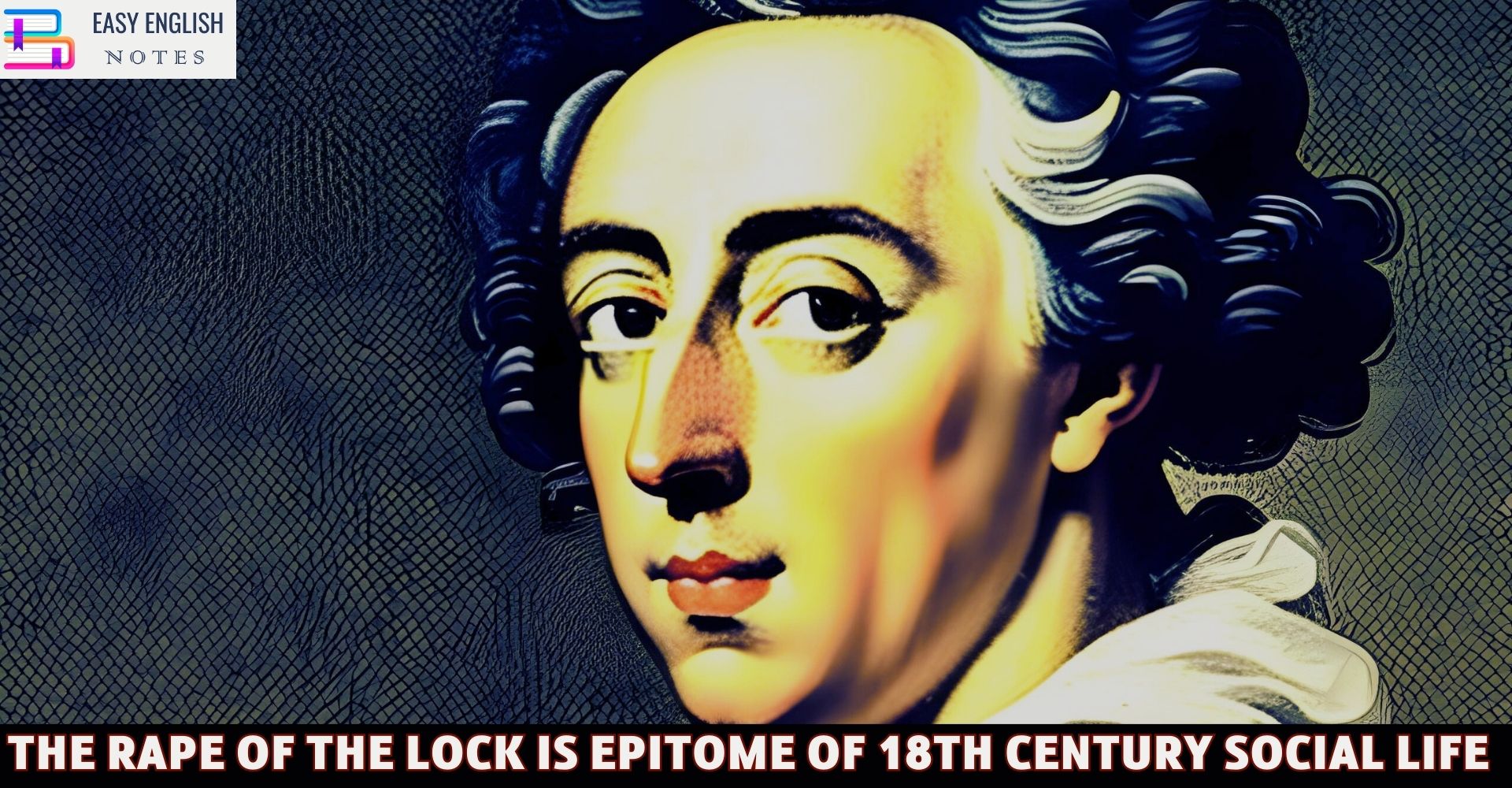In the annals of English literature, few works stand as vivid and nuanced reflections of a particular era as Alexander Pope’s “The Rape of the Lock.” This satirical masterpiece serves as a window into the multifaceted nature of 18th-century life, presenting a compelling tableau of society, class dynamics, and the lavish pursuits of the upper echelons. Through Pope’s masterful use of language and wit, he not only entertains but also offers a profound commentary on the intricate intricacies of his time, creating a timeless piece that continues to captivate readers across generations.
A Mosaic of 18th-Century Realities
At its core, “The Rape of the Lock” emerges as an authentic mirror reflecting the nuances and complexities of the 18th century. Pope’s unparalleled ability to capture the essence of his era is a testament to his mastery of both language and observation. In the words of Leslie Stephen, Pope’s literary prowess lies in his unique capability to embody the spirit of the time, outshining his contemporaries in this endeavor. This distinct trait turns the poem into more than just a work of art; it transforms it into a historical artifact that encapsulates the spirit, values, and attitudes of the age.
The Artificiality of 18th-Century Life
The 18th century was a time of ostentation, marked by a keen focus on outward appearances. This was the era of clubs and coffeehouses, where social interactions often revolved around carefully curated images and personas. In this context, the upper classes placed an undue emphasis on surface-level qualities, valuing superficial charm and allure over innate virtues. Corruption, sadly, was rampant in society, corroding the very fabric of public life. The lack of self-sacrifice among public figures cast a shadow on the noble idea of serving the greater good.
Also Read :
- Compare Hamlet with Macbeth, Othello and other Tragedies
- “The Pardoner’s Tale” is the finest tale of Chaucer
- Prologue to Canterbury Tales – (Short Ques & Ans)
- Confessional Poetry – Definition & meaning
- Line By Line Explanation Of The Poem The Eve of St. Agnes
The Aristocracy’s Pursuit of Superficiality
Pope’s meticulous portrayal of the aristocracy in “The Rape of the Lock” further magnifies the era’s obsession with the superficial. The poem suggests that the fashionable elite of the time were engrossed in a lifestyle that prioritized love-making over more substantial matters. The character of Belinda exemplifies this trend, with her late morning awakenings immersed in the lingering fragrance of romance. The fascination with lapdogs and the elaborate rituals of her toilet underscore the preoccupation with external appearances.
Reflections on Gender and Courtship
Pope’s portrayal of gender dynamics and courtship rituals provides invaluable insight into 18th-century society. The satire within the poem suggests that women were often viewed as objects of frivolity, existing mainly for the purposes of romance. This perception is reinforced through the depiction of women like Belinda, whose lives seemed dominated by the art of attracting and captivating men. This perspective, while exaggerated for comedic effect, sheds light on the societal norms that limited women’s roles and aspirations.
Fops and the Changing Notion of Masculinity
In “The Rape of the Lock,” Pope also delves into the realm of masculinity and its changing definitions in the 18th century. The portrayal of young gallants, often referred to as “fops,” highlights the evolving notions of what constituted a “gentleman.” The decline of traditional chivalry and the rise of a more self-indulgent approach to life resulted in a generation more preoccupied with fashion and outward appearances than with virtues of character. The Baron’s audacious act of snipping Belinda’s lock serves as a metaphor for the superficiality of their pursuits.
Artificiality and Its Implications
Pope’s incisive wit exposes the frailties and excesses of 18th-century society, presenting an accurate representation of its artificiality. The poem serves as a mirror reflecting an age marked by curd parties, lavish toilette rituals, and the trivialities of aristocratic life. Despite the dazzling veneer, there exists an inherent emptiness—a lack of deeper ideals that elevate art beyond the superficial. This paradox underscores the broader cultural shift from substance to style during this era.
A Chronicle of Contemporary Life and Manners
“The Rape of the Lock” stands as a living chronicle of 18th-century life and manners. Pope’s keen observations and satire capture the very essence of a society that found solace in perfumed amusements and idle vanities. The poem goes beyond mere entertainment, inviting readers to immerse themselves in the ambiance of a time where refinement often masked a lack of genuine ideals.
Pope’s Enduring Influence
Pope’s influence on the literary landscape is enduring and far-reaching. His role as a representative of his era’s tendencies is evident in his poetry’s distinct flavor, which resonates with the changing cultural landscape of his time. His poetic journey was guided by the transition from the grandeur of the past to a preference for elegance and refinement—a transition shaped by the prevailing French taste that turned English minds away from the archaic and toward symmetry and polished aesthetics.
Conclusion: A Timeless Glimpse into a Bygone Era
In the realm of literature, “The Rape of the Lock” stands as an artistic masterpiece and historical testament. Pope’s remarkable ability to encapsulate the spirit of the 18th century elevates the poem beyond a mere satire; it transforms it into a treasure trove of insights into an age defined by its grandiosity, superficiality, and unique values. Through wit, humor, and piercing commentary, Pope’s work continues to be a timeless portal that transports readers to the heart of a bygone era—an era that, despite its differences, resonates with the universal aspects of human nature and societal evolution.
PLEASE HELP ME TO REACH 1000 SUBSCRIBER ON MY COOKING YT CHANNEL (CLICK HERE)











